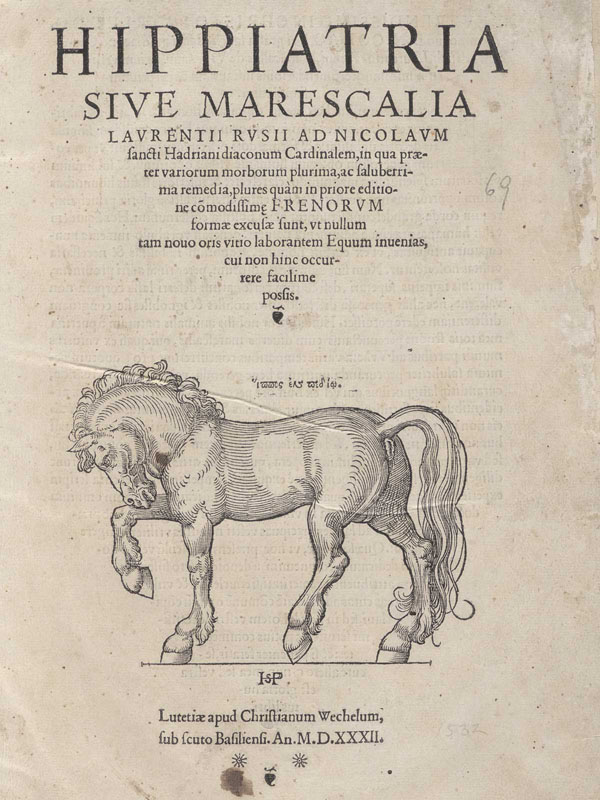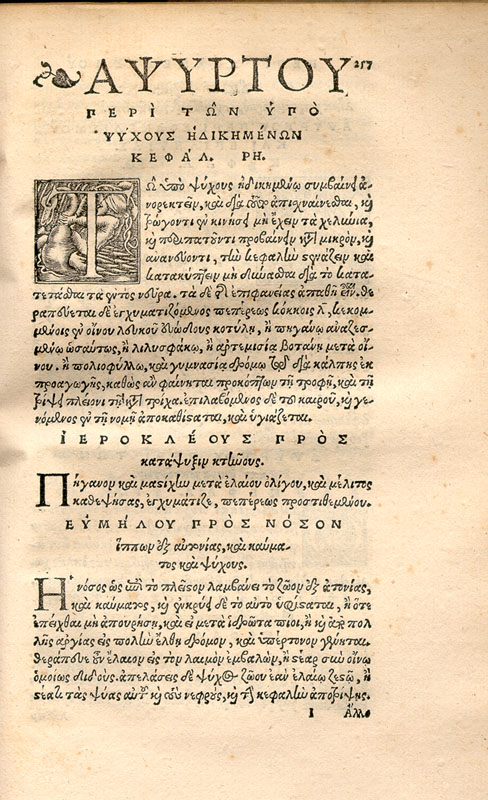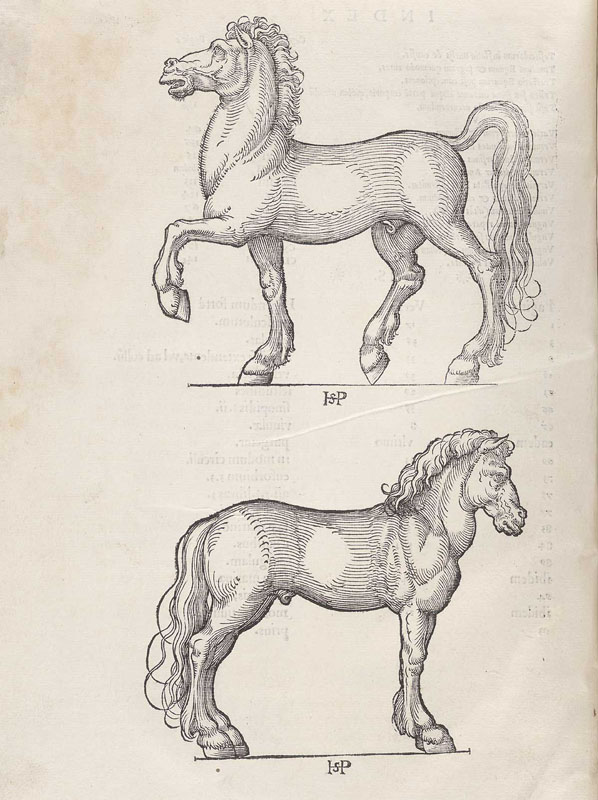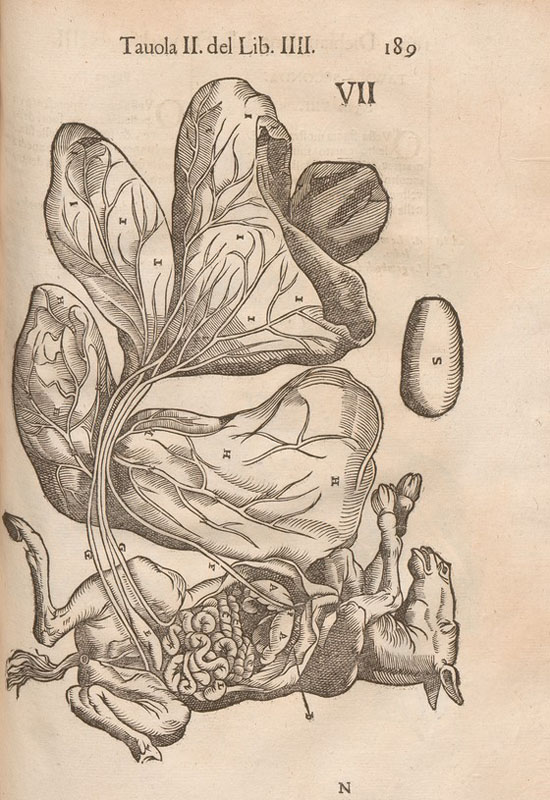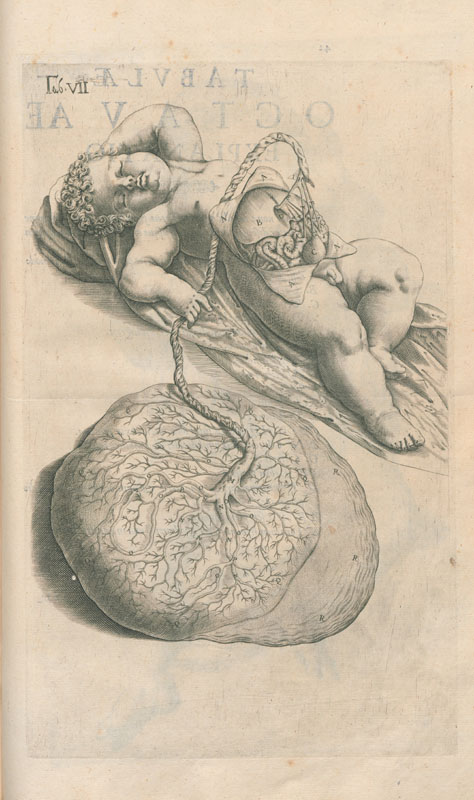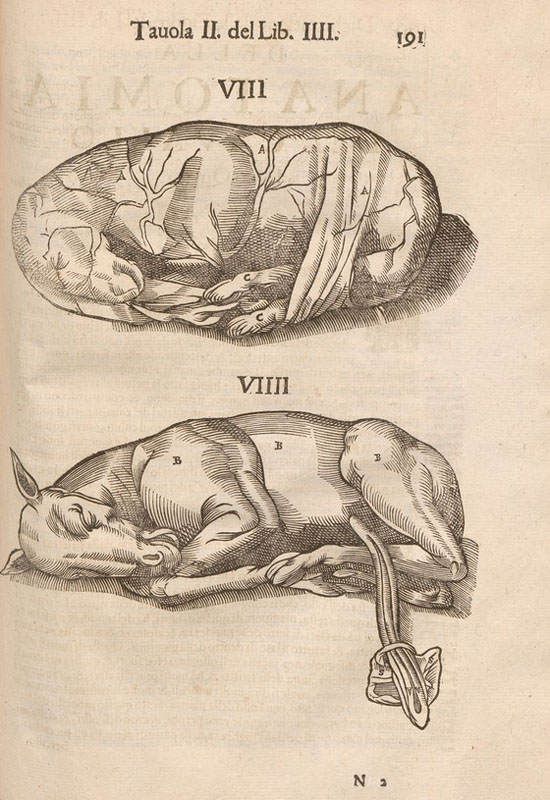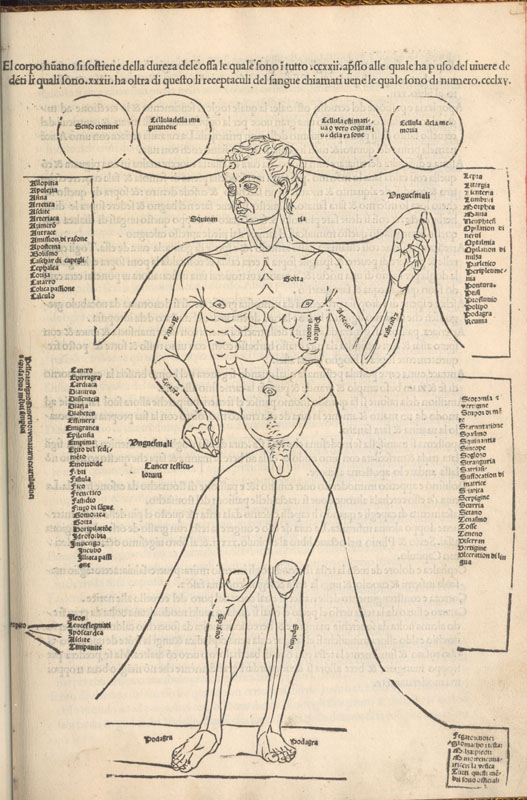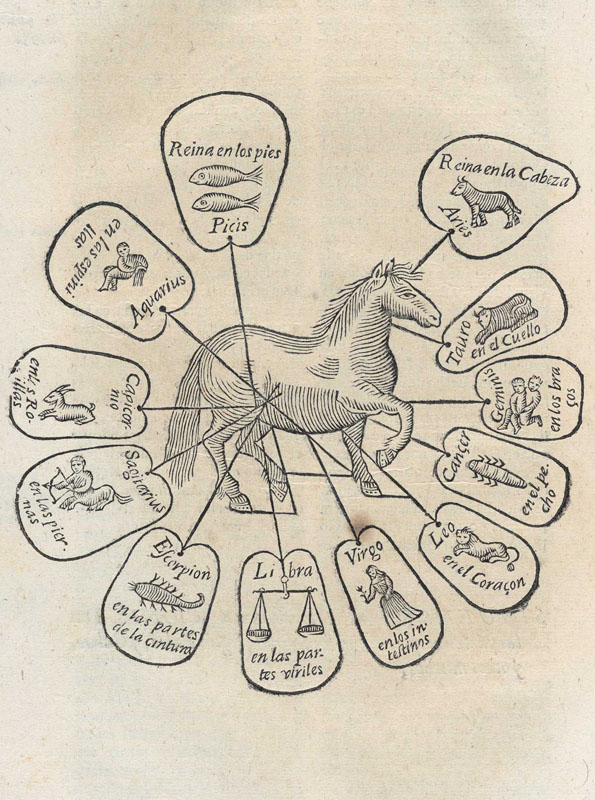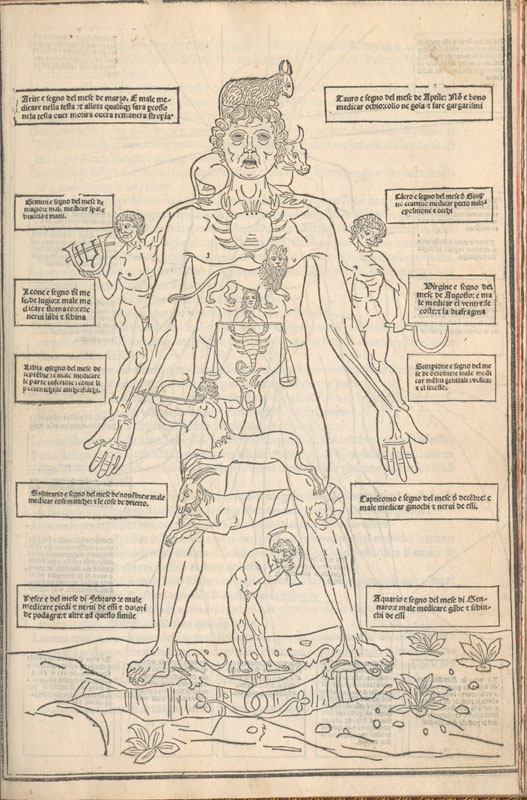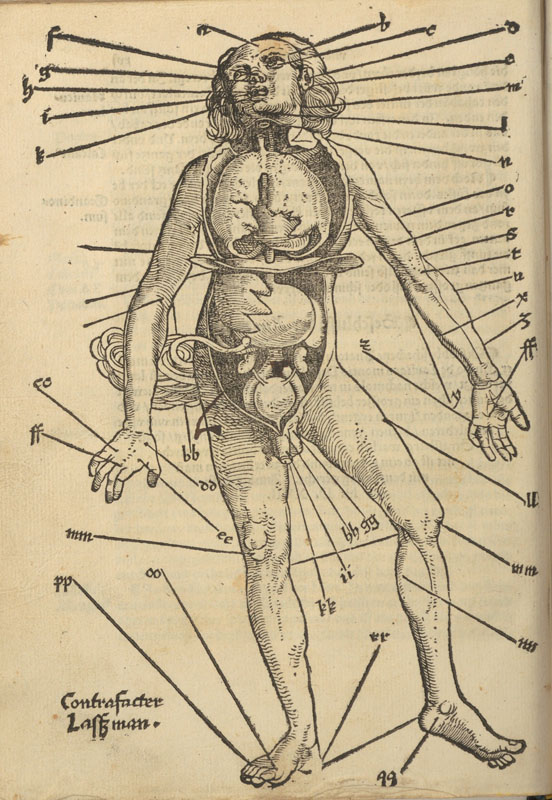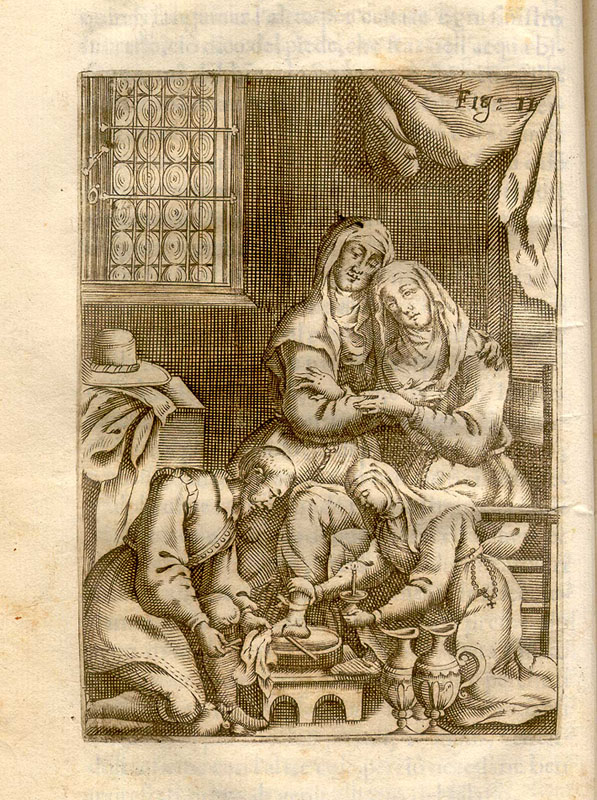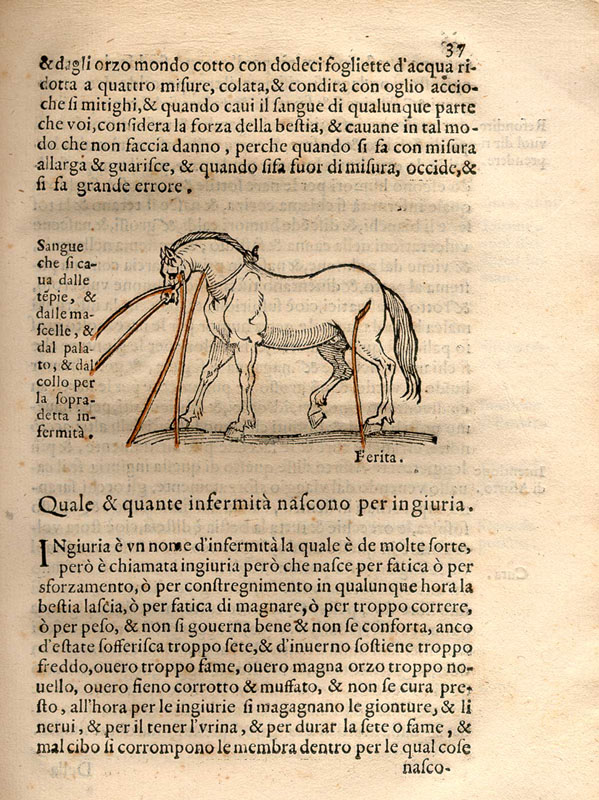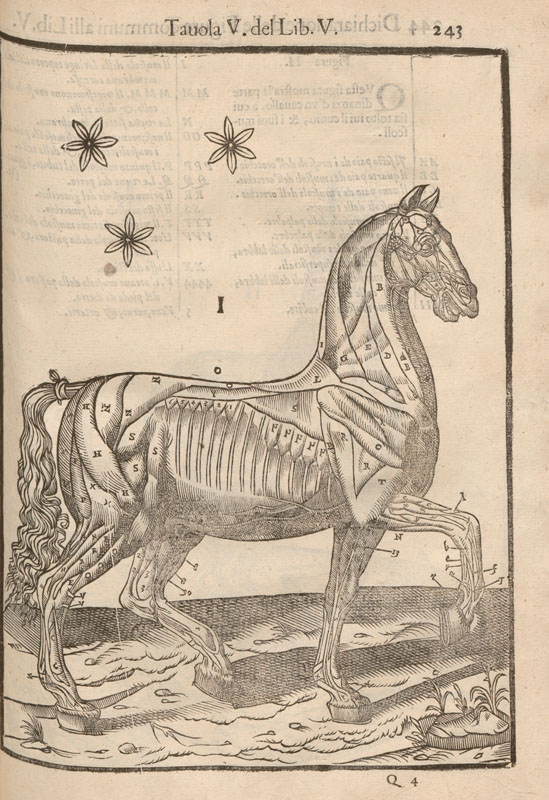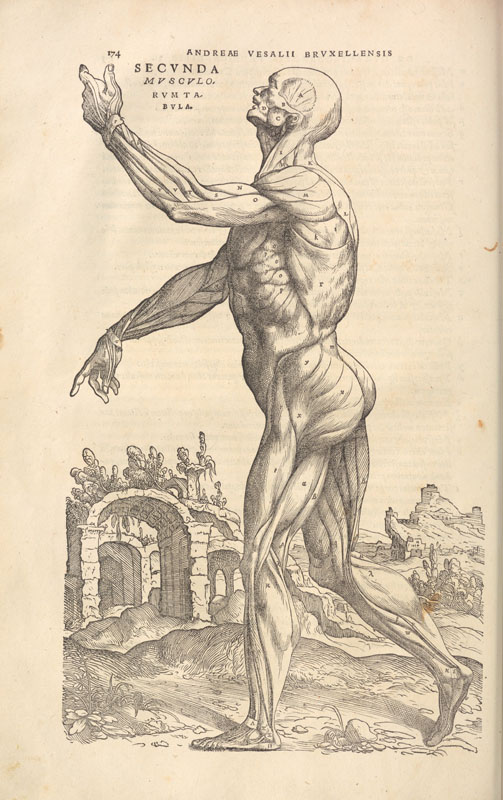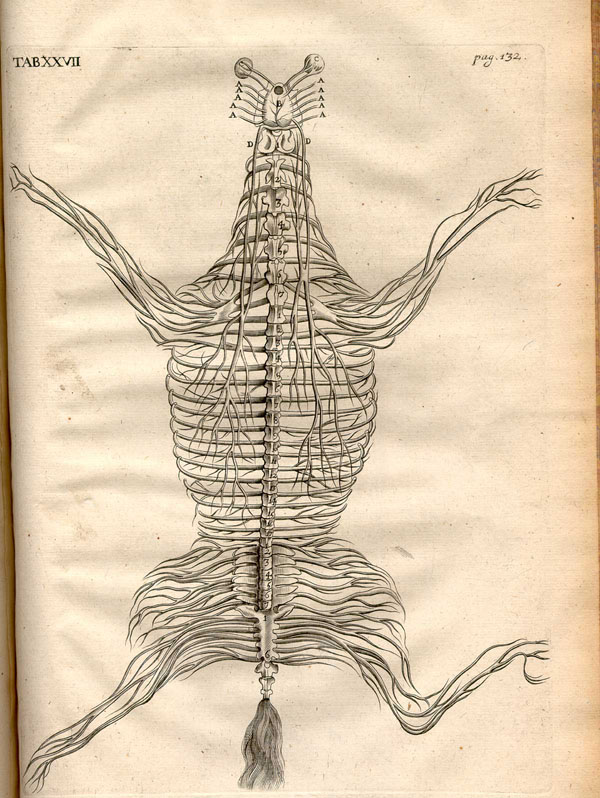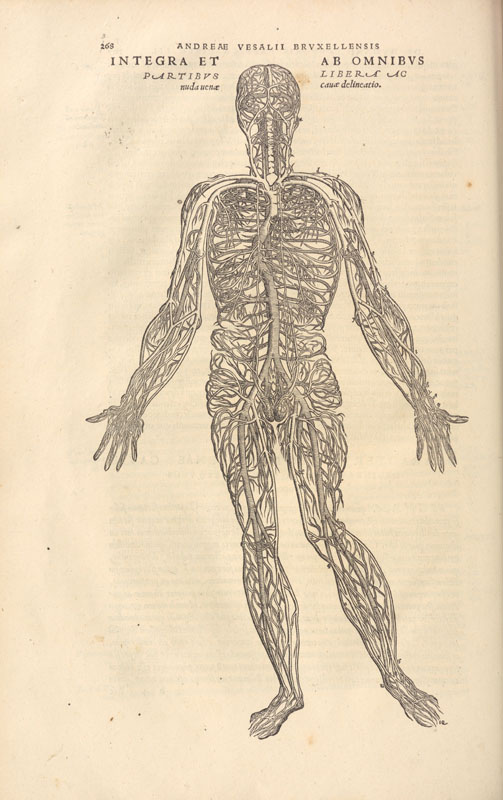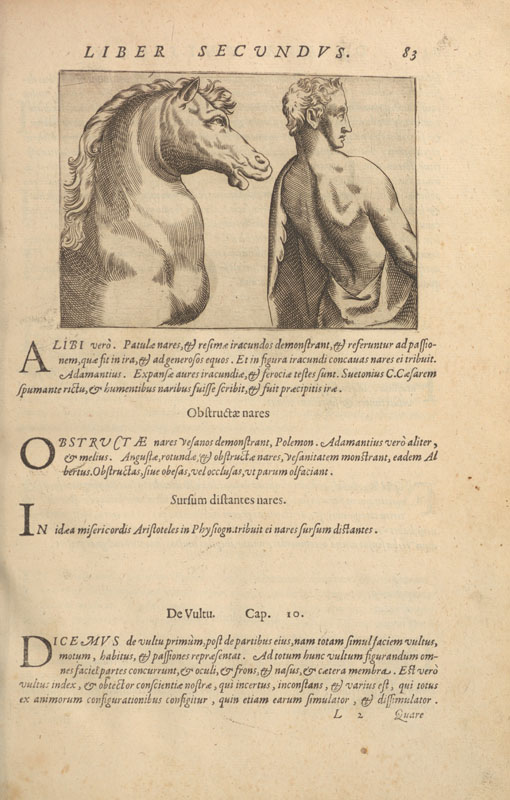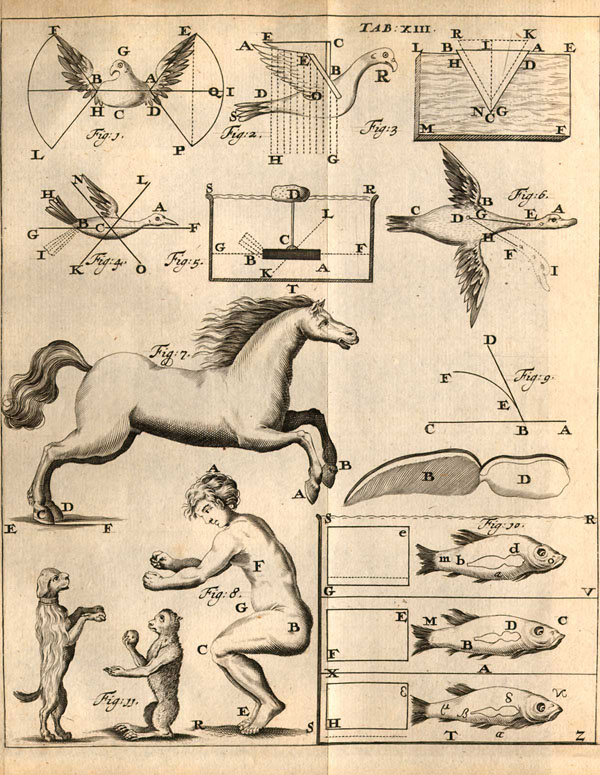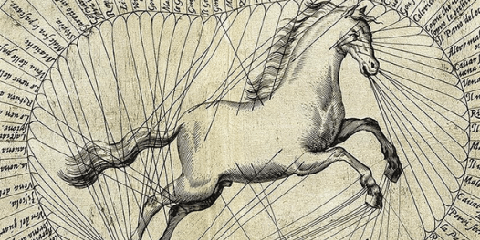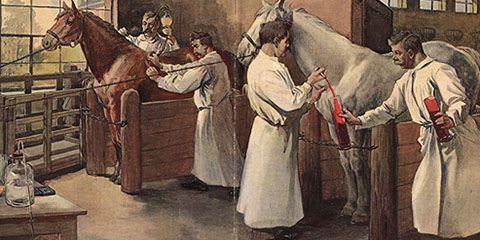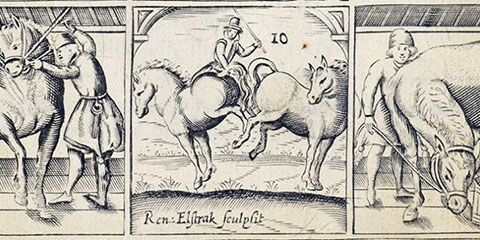Hippiatria
The Hippiatria: Ancient Texts
Medieval and Renaissance veterinary medicine looked to ancient veterinary texts for its inspiration, just as physicians for human healing did. In the case of horses, veterinarians relied on a set of Classical and Byzantine Greek texts called the “Hippiatrica,” which was based strongly on ancient Greek texts by physicians like Hippocrates. The most noted of these veterinary authors was Apsyrtos, a military veterinarian in the service of the Roman Emperor Constantine I.
Early Growth
Physicians and veterinarians alike were interested in fetal development, and their research often went in tandem, sometimes appearing in the same or closely related works. In reverse order from other anatomical study, detailed images of equine fetal development appeared in publication earlier than did those for humans.
Health Charts
Disease Man and Disease Horse
A common chart from medieval and Renaissance medical texts is “Disease Man,” wherein the diseases that can affect different parts of the body are laid out schematically around the body. Horse veterinarians adopted this chart, creating a “Disease Horse”; this chart often served as an index to the book, stating the page on which a particular horse disease could be found.
Astrology and Health
An important ingredient to medieval and Renaissance human healing was Astrology, whereby the influence of the stars on the body was studied and carefully charted. Veterinarians did the same with horses. In these two charts, the signs of the zodiac are associated with different parts of the body: for example, don’t treat the head while Aries is in the sky.
Bloodletting and the Four Humors
Central to early theories of human health was keeping the four humors (blood, bile, black bile, and phlegm) in balance, which involved the practice of bloodletting. Veterinarians followed suit and created bloodletting charts and systems which were similar to those created for human healing.
Studying Form
In the mid-1500s, sumptuous anatomical studies of human anatomy began appearing as an explosion of human dissection yielded a new perspective on the human form.
Reading Bodies
Physiognomy: A Study in Character
Physiognomy was the science of predicting a person’s character and health according to his physical appearance, especially the face and head. This ancient science dated back to Hippocrates in the fifth century BC, and Giambattista della Porta (1535?-1615) popularized it two thousand years later, comparing different human forms to animals. In this image, he shows that noble humans often resemble the noblest of animals, the horse.
Physiology and the Science of Motion
Physiology, or the science of how the body functions, was studied in tandem by horse veterinarians and physicians, as each tested their hypotheses on patients. Giovanni Alfonso Borelli (1608-1679) was one of the first physicians to apply the concepts of physics and mechanics to the human and animal body, viewing the bones and joints as levers and the heart as a pump.
About
The Horse: A Mirror of Man
The content of this website is drawn from a display held in the History of Medicine Division of the National Library of Medicine, December 5, 2005 to April 28, 2006.
The show was curated by Michael North who was then Head of Rare Books and Early Manuscripts at NLM.
You can view the original website created to accompany the display archived in the NLM Institutional Archives web collection.

